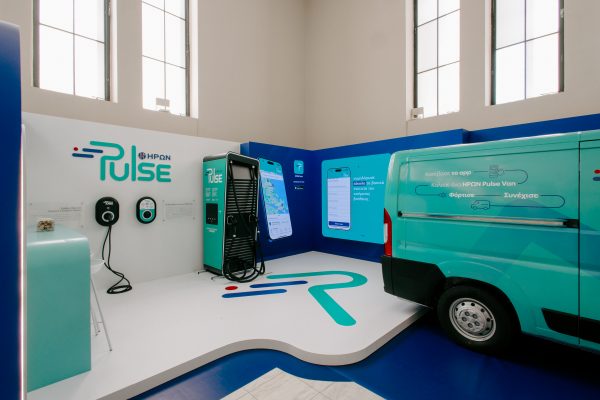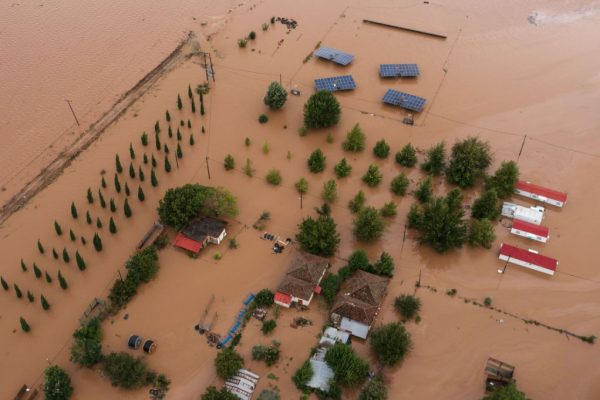
The Greek government plans to cover the increased energy needs of the country’s 38 small mountain municipalities with “green” energy from photovoltaic systems.
In the planning, which will be included in the “strategic plan for the highlands”, the proposal concerns covering 80% of the electricity bills of the approximately 220,000 permanent residents in the specific disadvantaged areas of the country, through Virtual Net Metering, i.e. by injecting into the electricity grid the energy produced by photovoltaic systems and offsetting it with the consumption.
It has been calculated that the required power from photovoltaics to cover the energy needs of the 38 small mountain municipalities is 142.6 MW (megawatts).
The cost of the investment has been calculated at 100 million euros and it is estimated that 37.2 million euros will be saved for consumers annually.
Of these 48.4 MW (cost of solar systems 33.9 million euros) will serve residential consumers and reduce their energy costs by 11.2 million euros/year.
The 4.8 MW (with a construction cost of 3.4 million euros) will be needed to meet the needs of the beneficiaries of the Social Household Tariff, who will save 0.8 million euros per year on their electricity bills. The rest will concern businesses and public/municipal infrastructure.
Networks
But the road to the energy autonomy of the 38 mountain municipalities still has obstacles. Due to the saturated electrical networks, in 17 of the 38 small mountain municipalities it is not possible to immediately submit new requests to connect photovoltaic stations because there are no margins for power absorption and other technical solutions will be sought with the Distribution Network Operator to ensure the necessary electrical space.
The coverage of energy needs through the self-production of electricity does not bring about any significant effect in terms of finding electrical space, e.g. in the Municipality of Paranesti, an available power of 0.3 MW is created, which is not enough to submit a new request for photovoltaic connection to the distribution network, because it is judged to be marginal.
The Municipalities of Epidaurus and Nemea continue to have the largest power absorption margin with 109.5 MW and 91.1 MW respectively. On the other hand, the municipalities of Limni Plastira and Central Tzoumerka have the lowest absorption margins with only 2.4 MW and 0.6 MW and it is doubtful if they can accept grid connection requests from PV plants.
Latest News

Economist: Greece Included in the Best Performing Economies in 2024
Meanwhile, Northern European countries disappoint, with sluggish performances from the United Kingdom and Germany.

EasyJet Expands Its Routes from Athens
The airline’s two new routes will be to London Luton and Alicante and they will commence in summer 2025.

Capital Link Forum Highlights Greece’s Economic Resurgence; Honors BoG Gov Stournaras
Capital Link Hellenic Leadership Award recipient, Bank of Greece Gov. Yannis Stournaras, an ex-FinMin, was lauded for his pivotal role during Greece’s economic recovery

Tourist Spending in Greece Up by 14%, Visa Card Analysis Shows
Greece’s capital Athens emerged as the most popular destination, recording a 17% increase in transactions with Visa cards, surpassing even the cosmopolitan island of Mykonos.

Inflation in Greece Unchanged at 2.4% in Nov. 2024
The general consumer price index (CPI) posted a 0.4% decrease in November compared to the previous month

2024 Christmas Holidays: Extended Shop Hours Schedule
The 2024 Christmas Holidays extended shop hours schedule commences on Thursday, December 12 and runs until the end of the year.

ELSTAT: Seasonally Adjusted Unemployment Down in October
The number of employed individuals reached 4,284,694, an increase of 67,723 compared to October 2023 (+1.6%) and 22,002 compared to September 2024 (+0.5%).

Greek PM’s Chief Economic Adviser Resigns
In the post on his Facebook page, Patelis did not disclose the reasons that led him to step down.

“Masdar Invests in the people of Greece and in the vision of TERNA ENERGY”
Four messages from the CEO of Masdar, the Arab renewable energy giant, after its acquisition of 70% of TERNA ENERGY

Lloyd’s List Greek Shipping Awards 2024: Honors for leading companies and personalities in the Greek shipping sector
20 awards presented at the 21st annual Lloyd's List Greek Shipping Awards


















![Χειμερινή εξοχική κατοικία: Οι Ελληνες γυρνούν την πλάτη παρά την πτώση των τιμών [γραφήματα]](https://www.ot.gr/wp-content/uploads/2024/12/Capture-19-90x90.jpg)






















 Αριθμός Πιστοποίησης Μ.Η.Τ.232433
Αριθμός Πιστοποίησης Μ.Η.Τ.232433